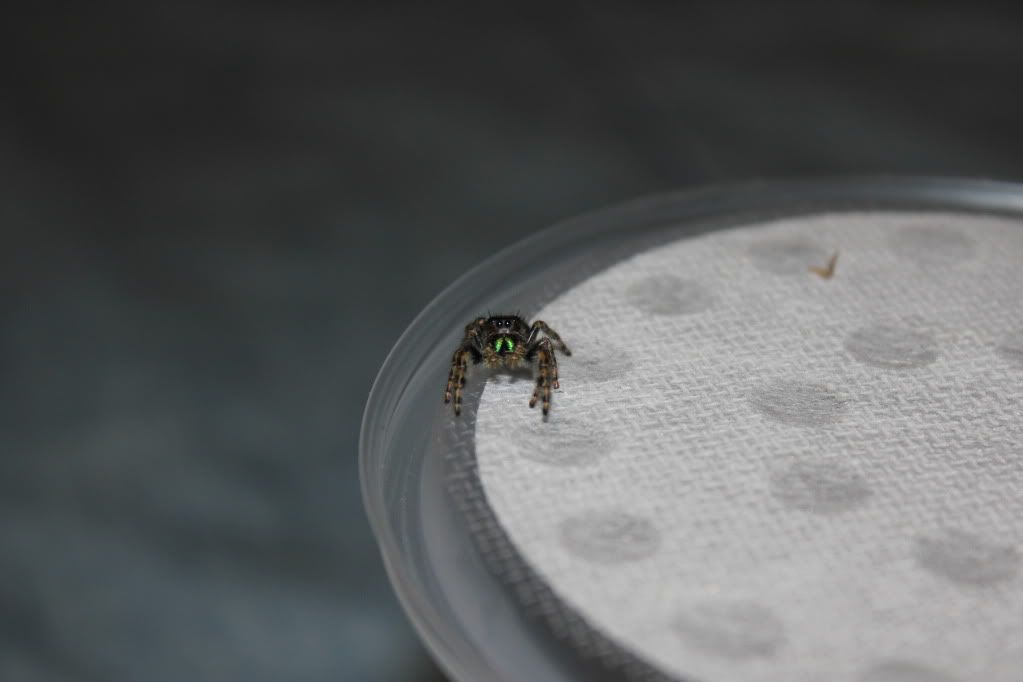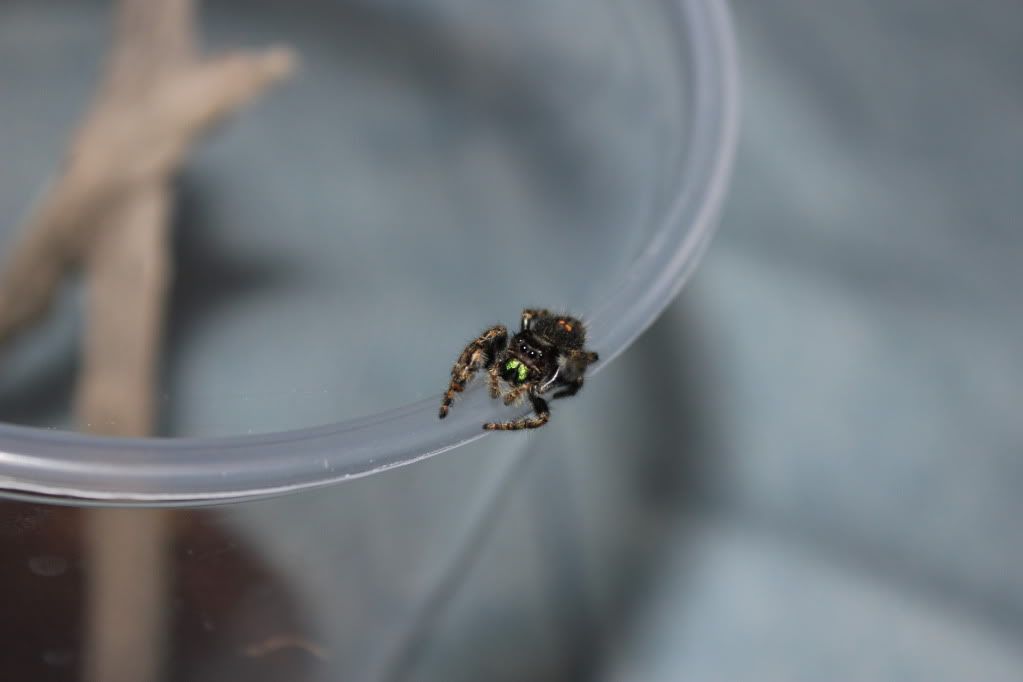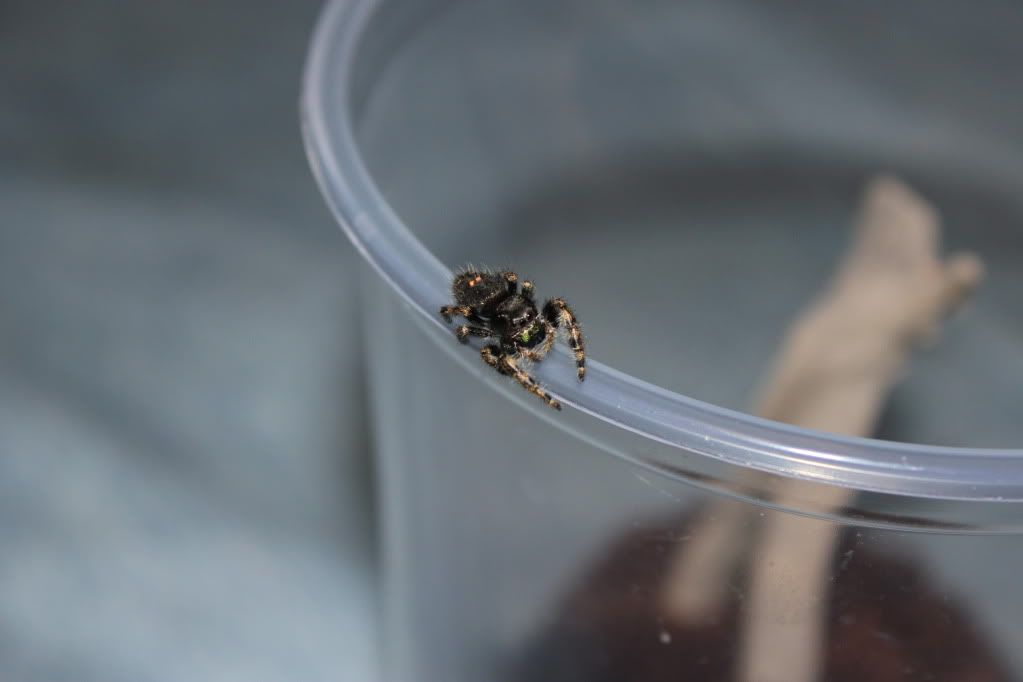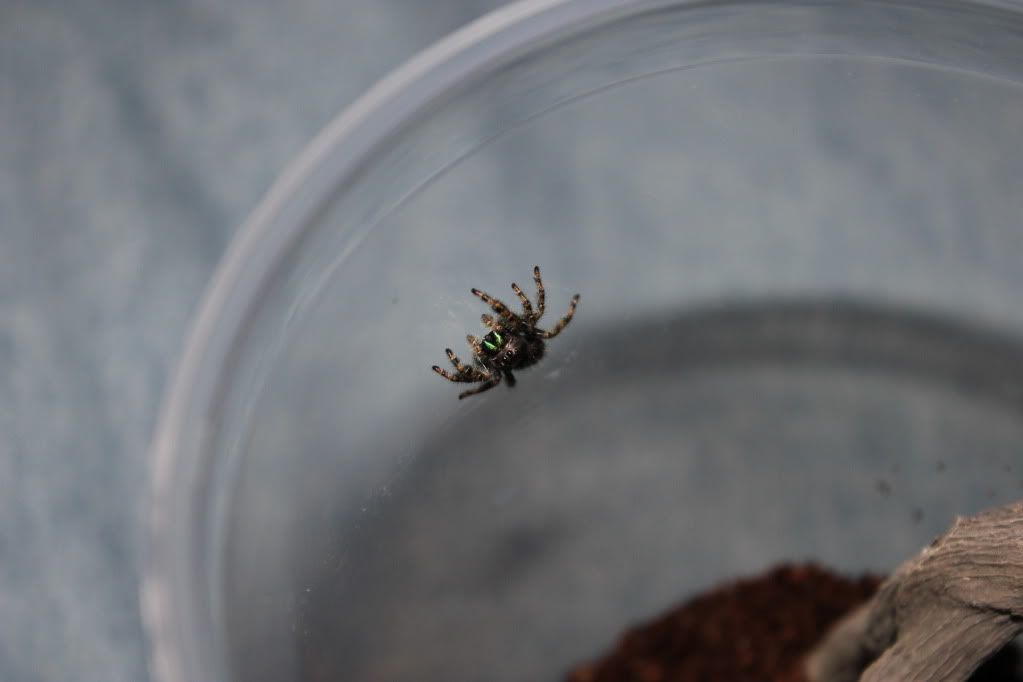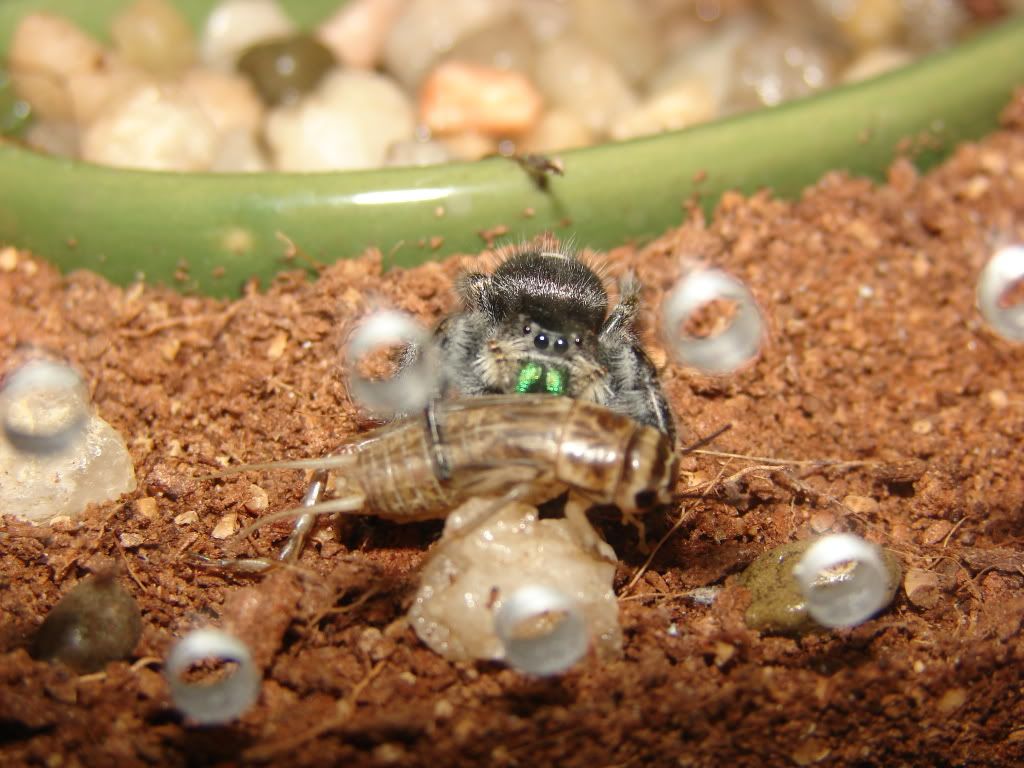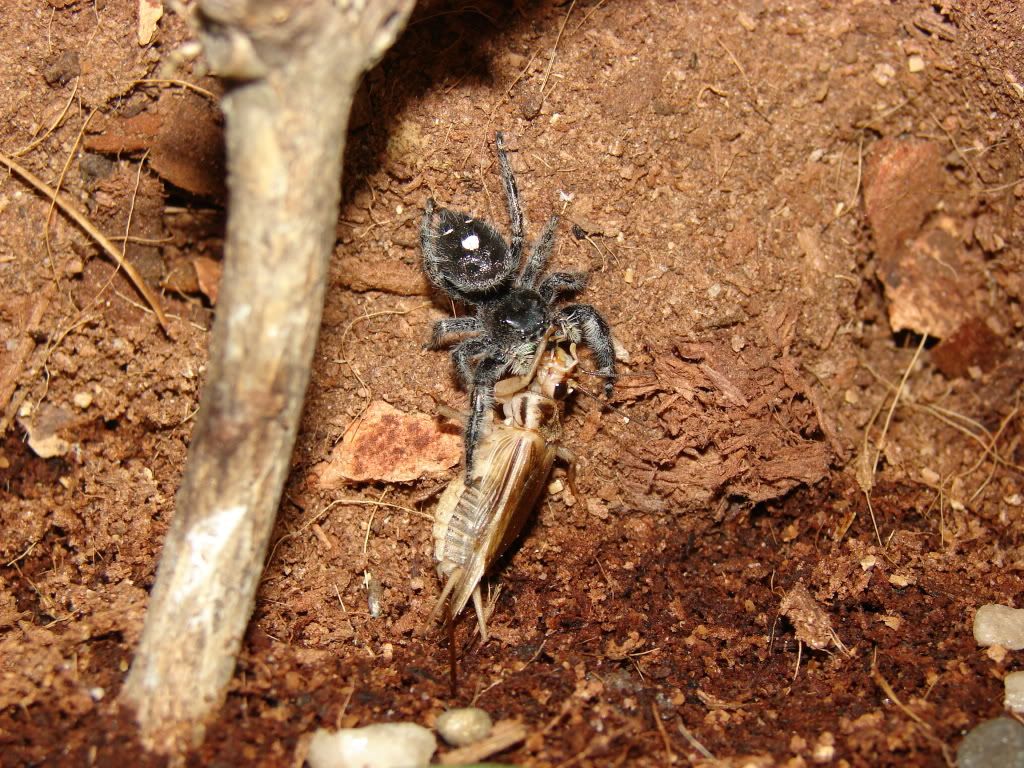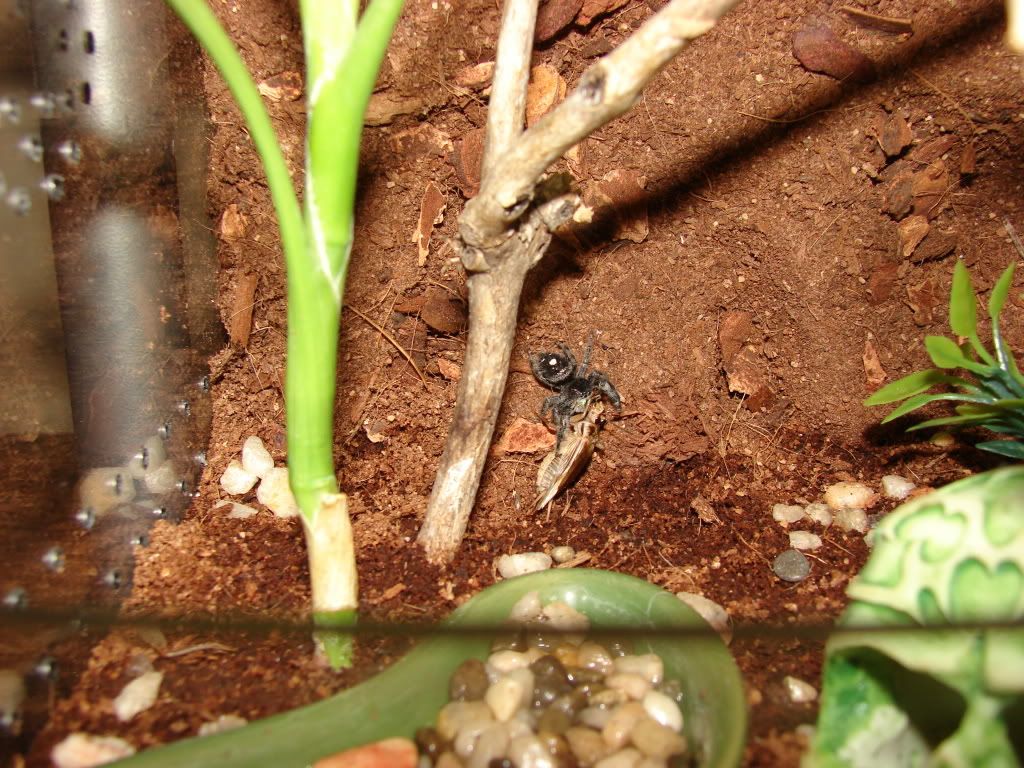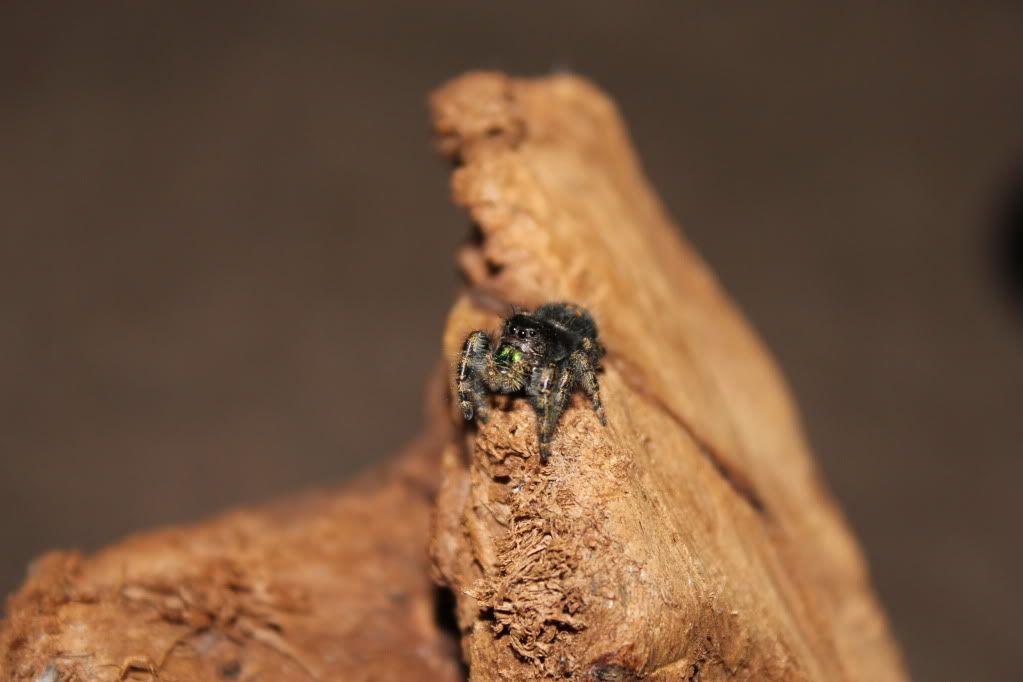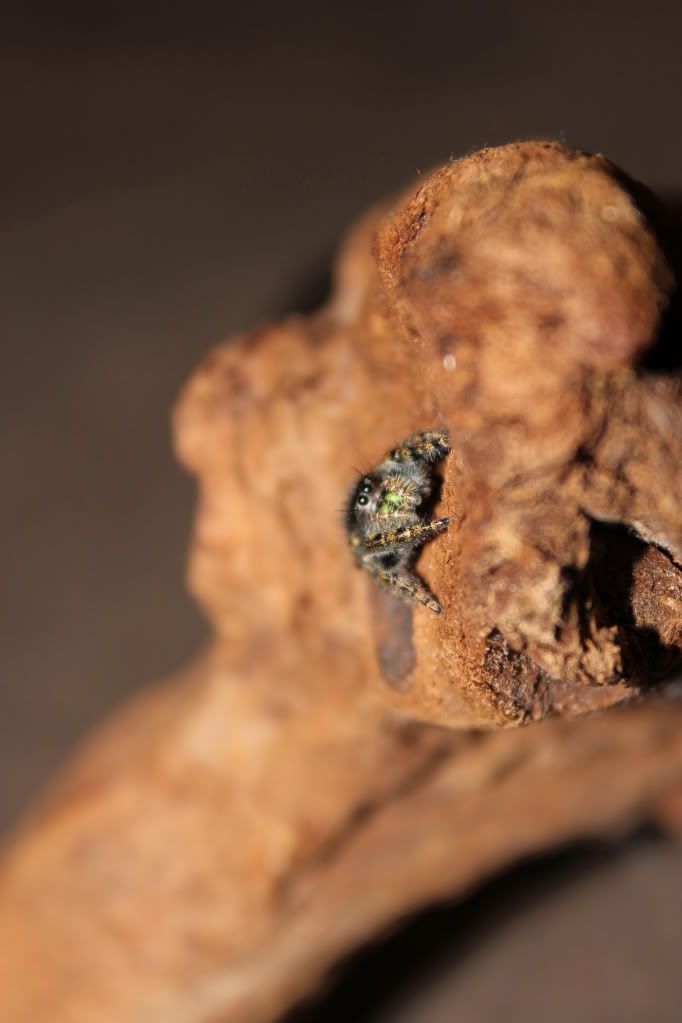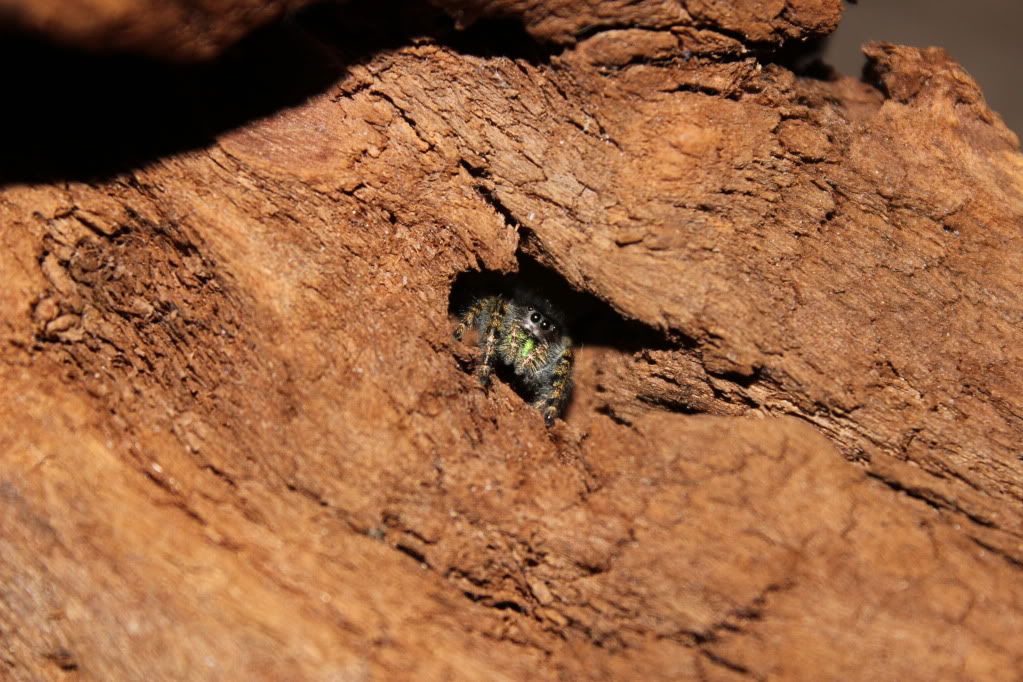- Joined
- Jul 2, 2008
- Messages
- 3,105
So I was at work today ripping aluminum siding off a house in about 35 degree weather when I happened to stumble upon this little guy. He was sitting directly on the plywood beneath the siding and was pretty slow at first which made the capture easy, but my question for all of you jumper pros is, what sex is it? And I'm right in my assumption that it's an audax, correct?
